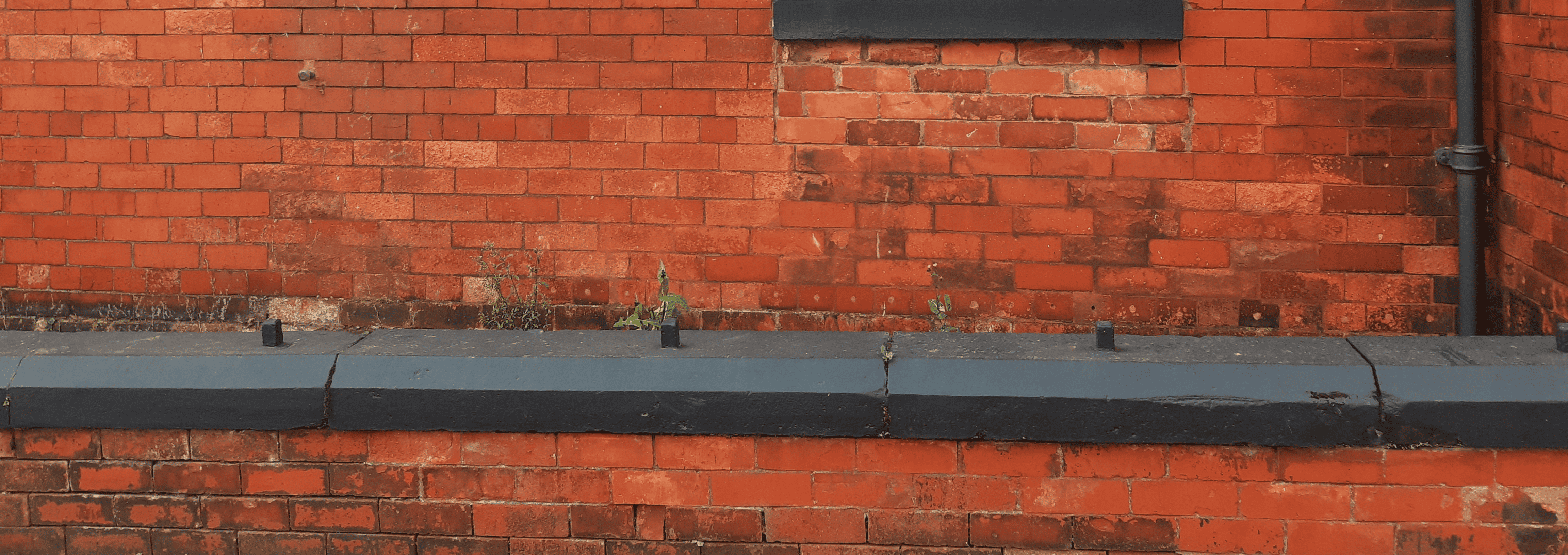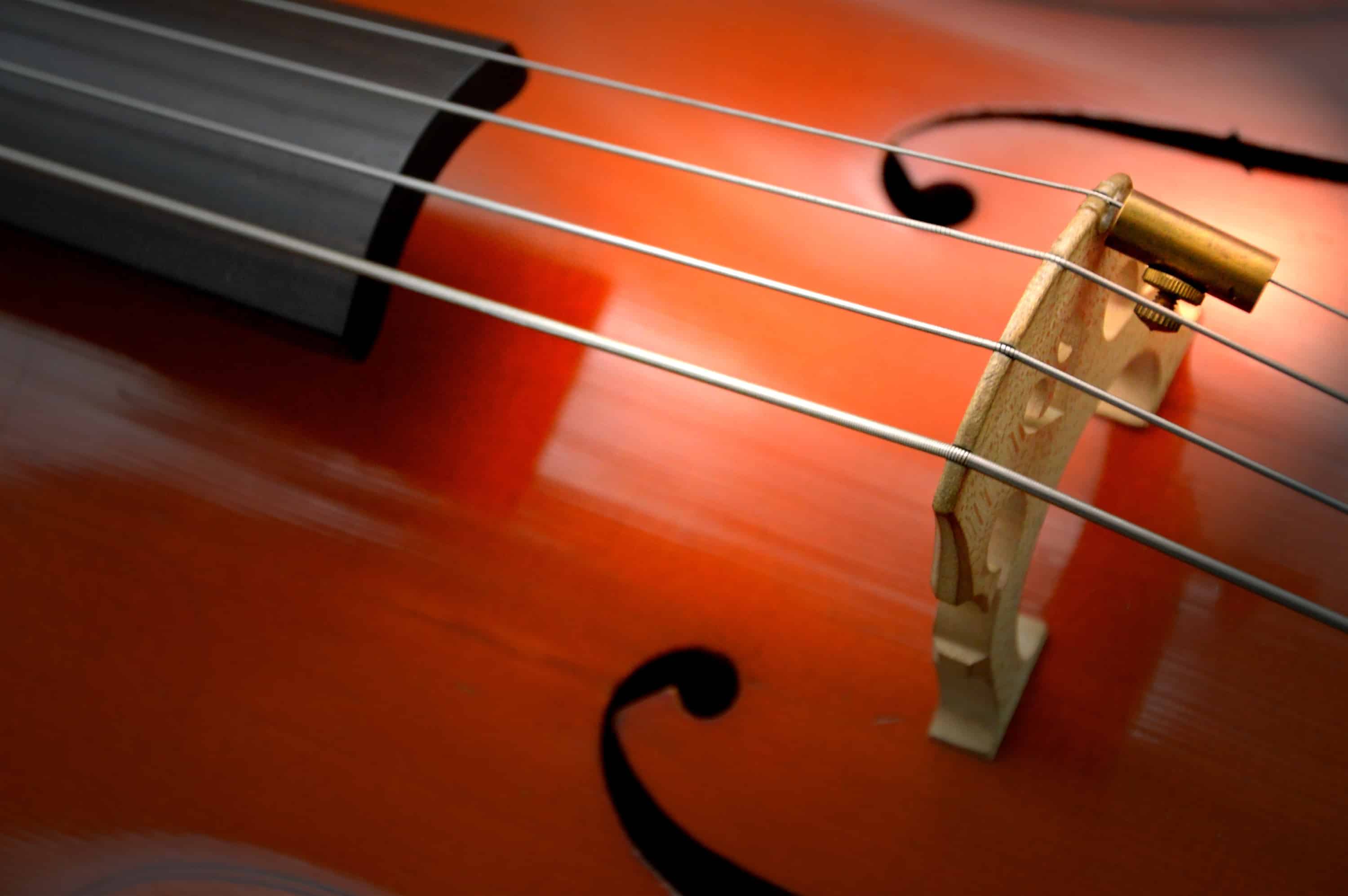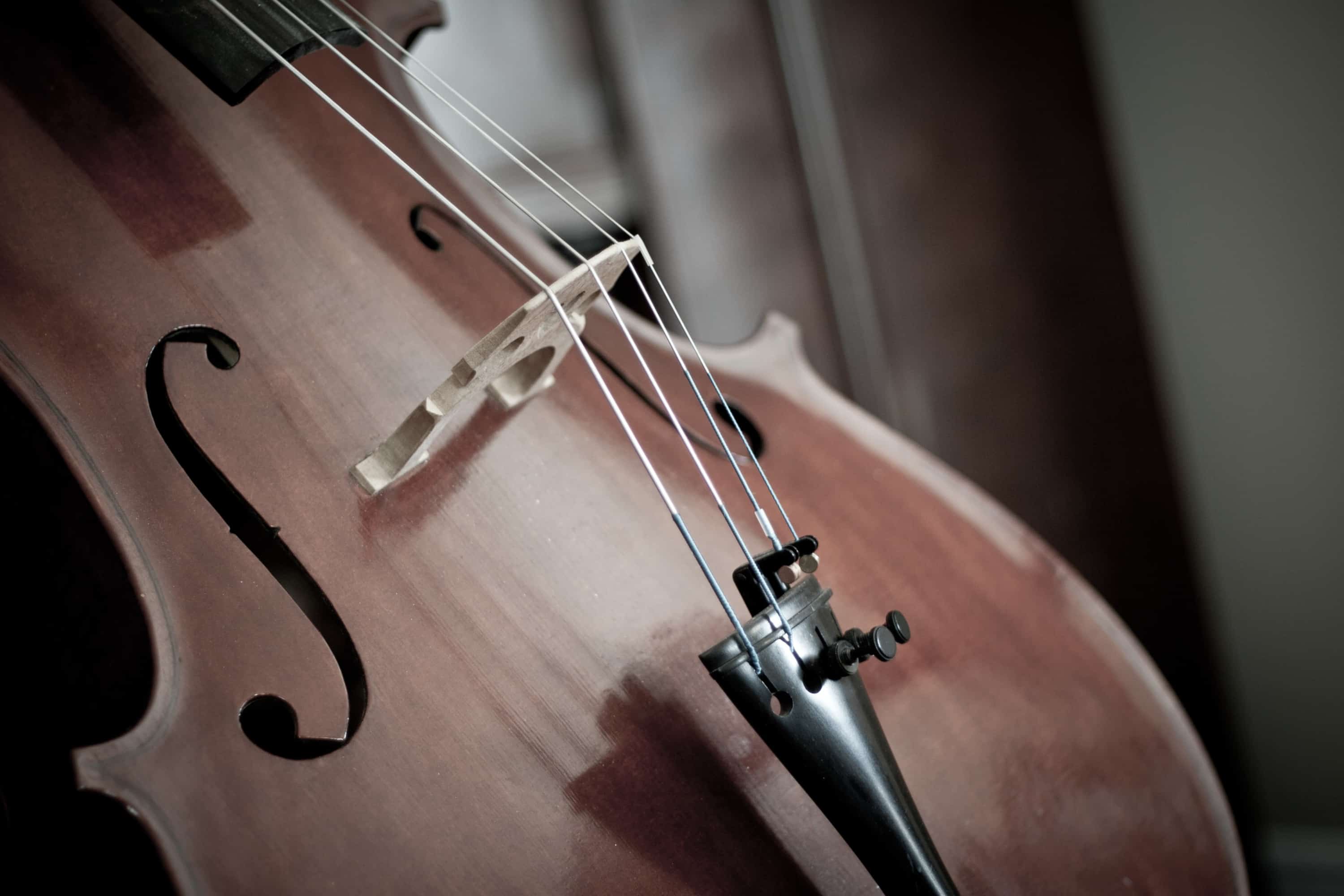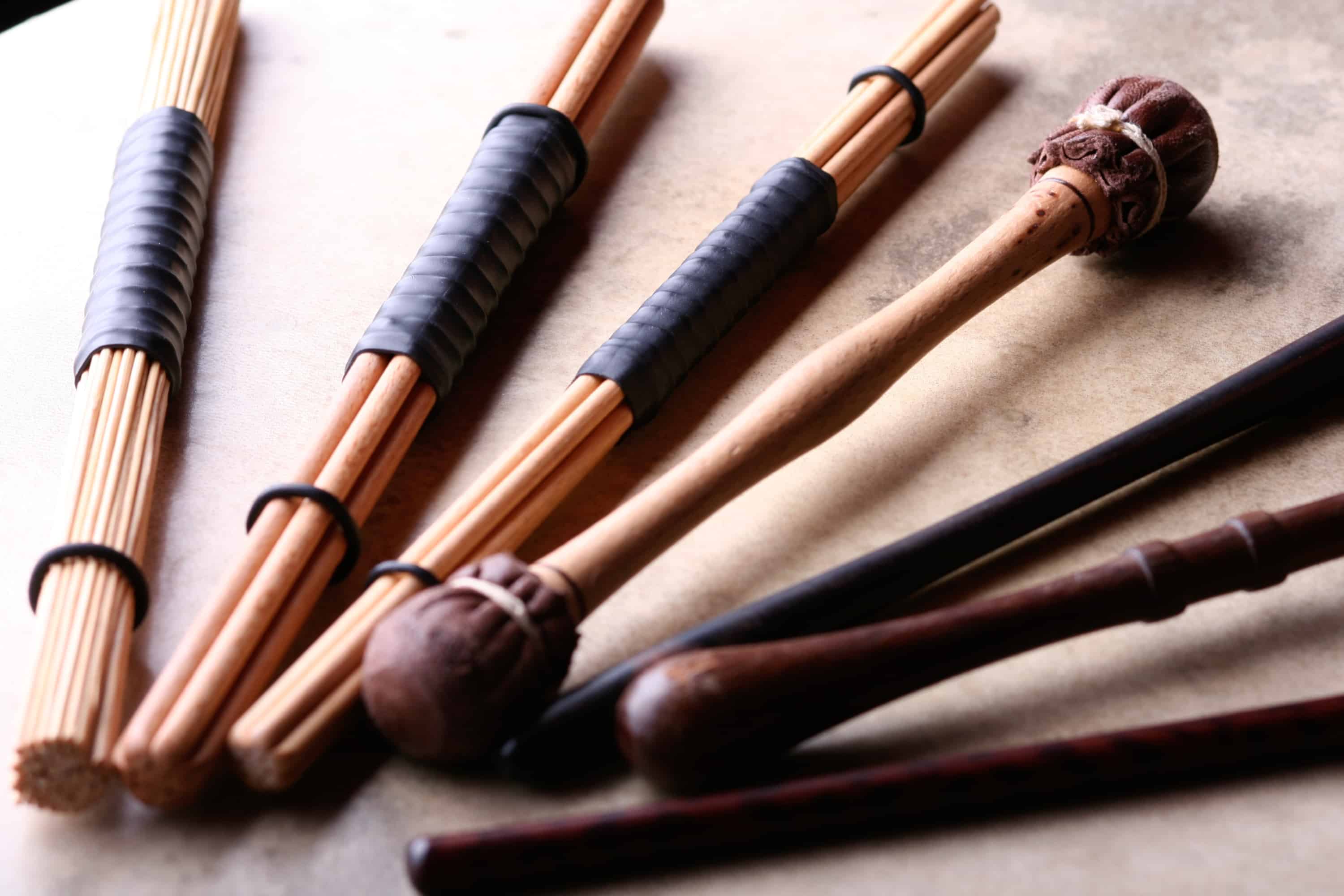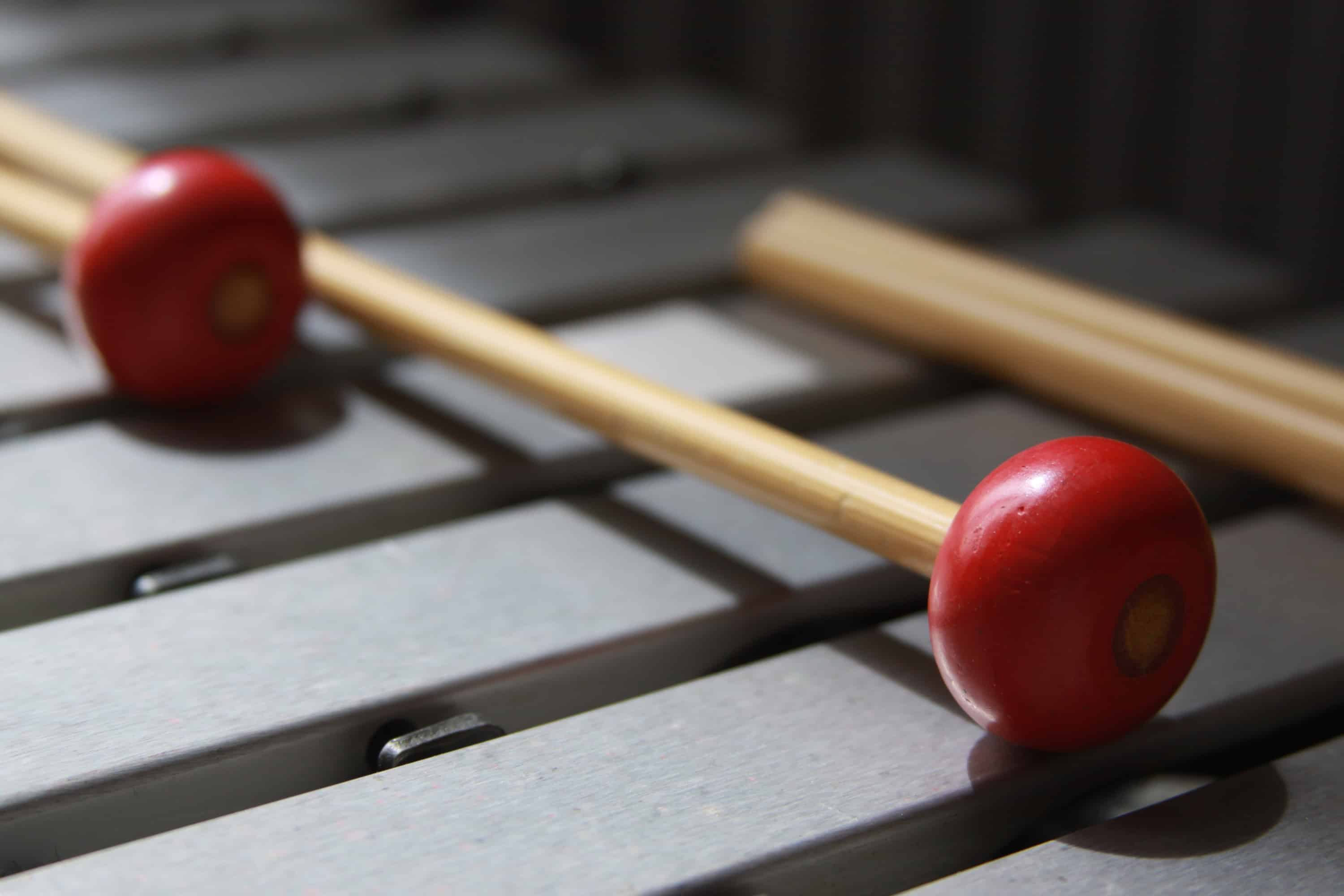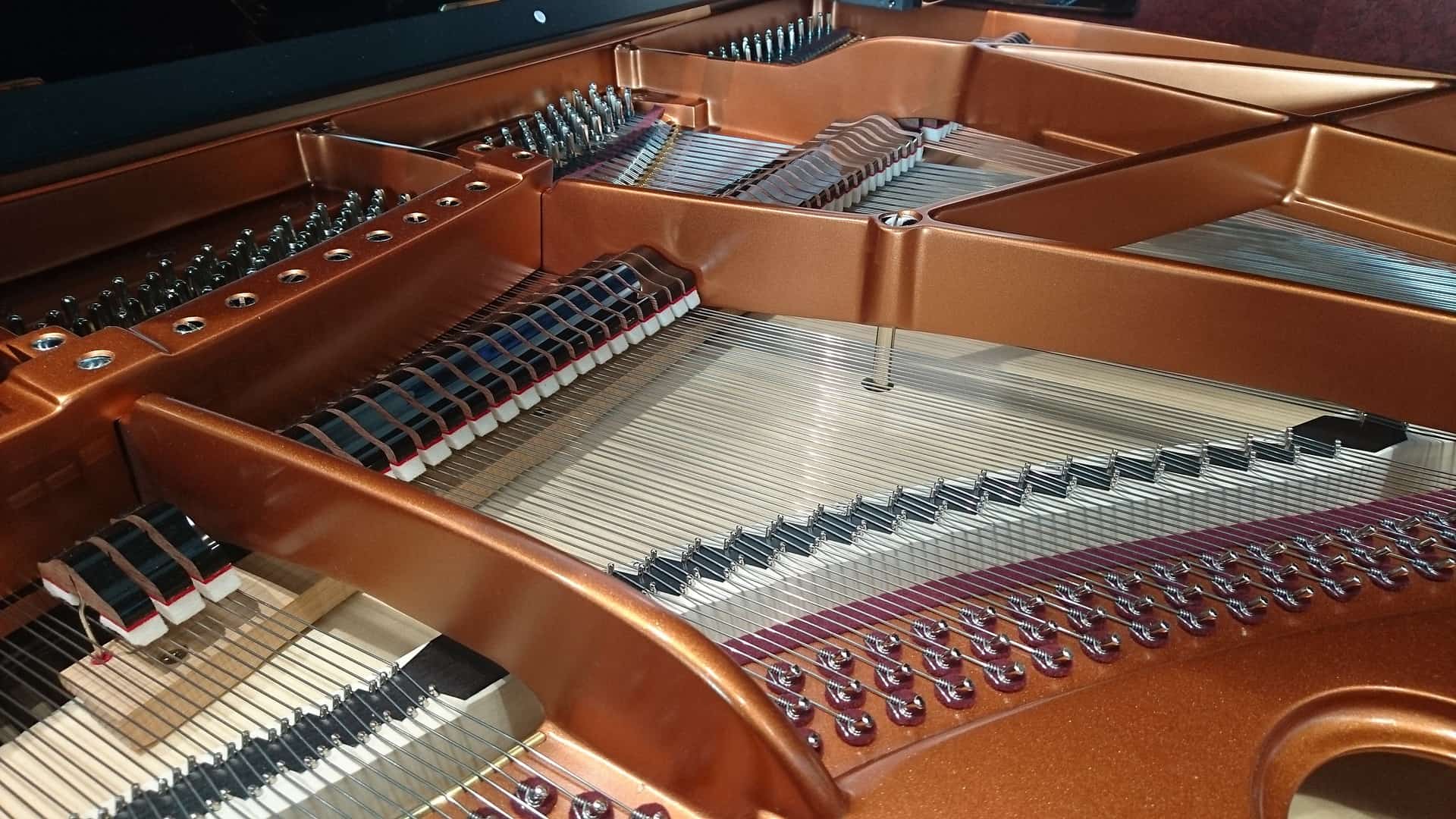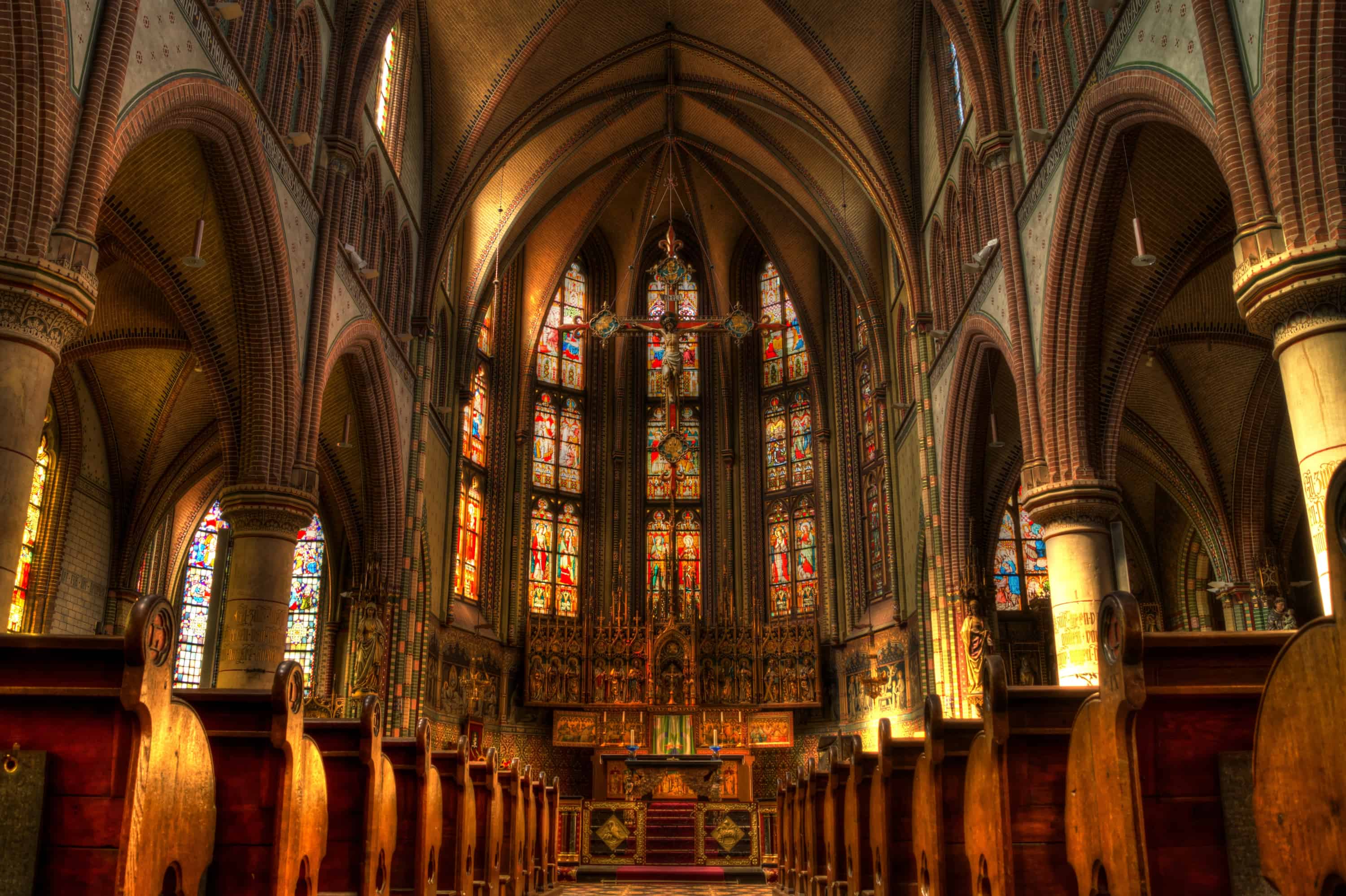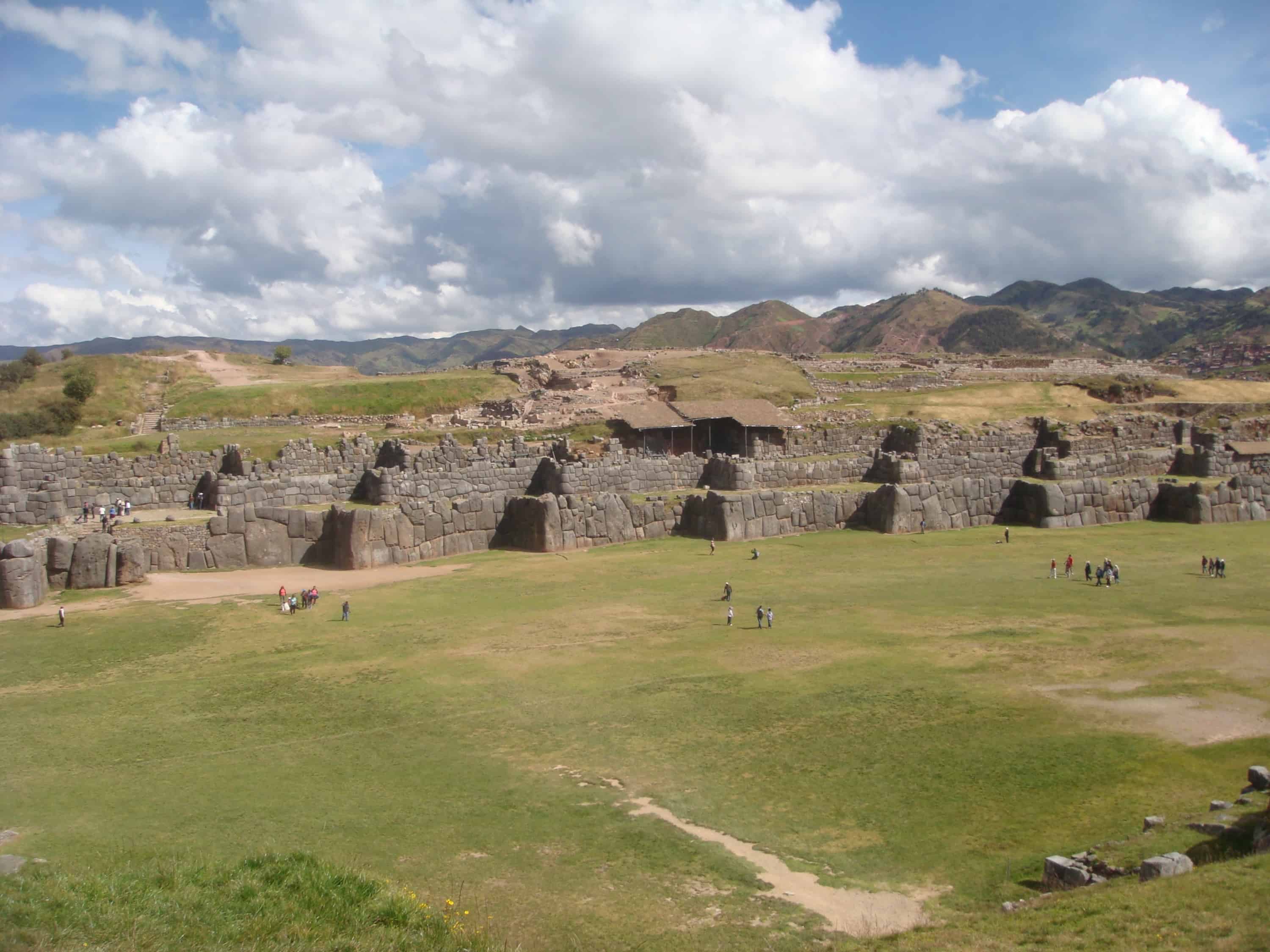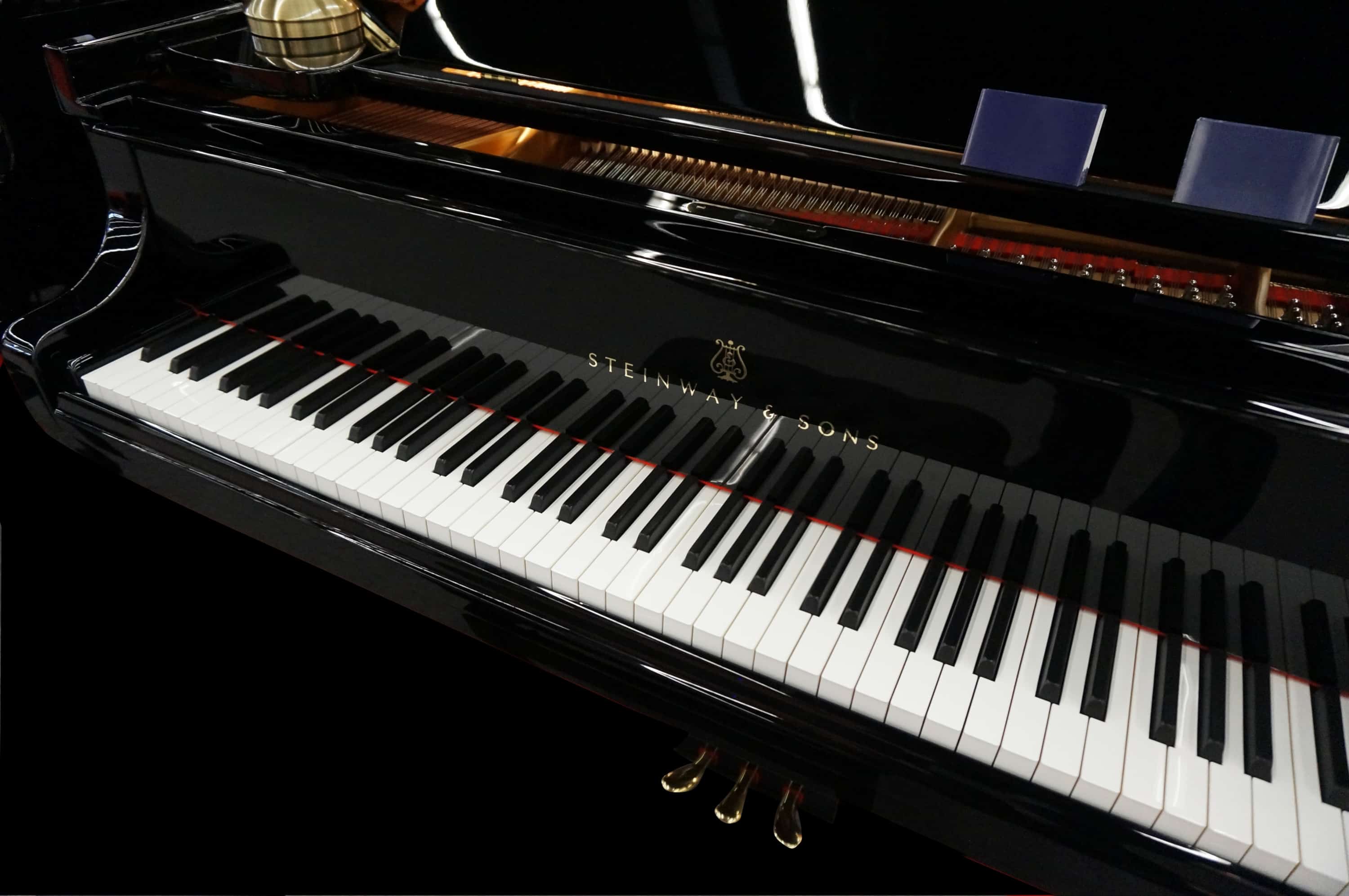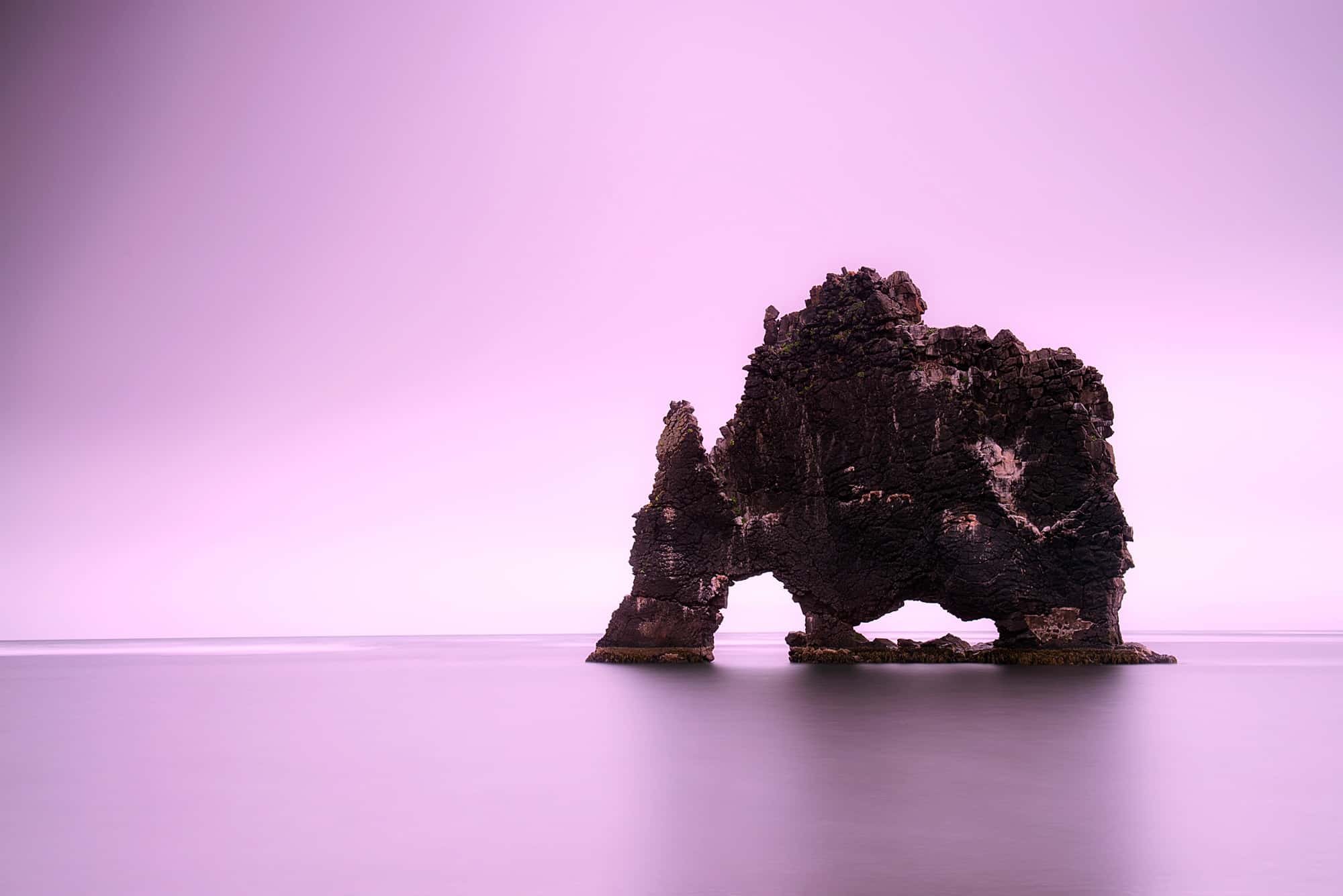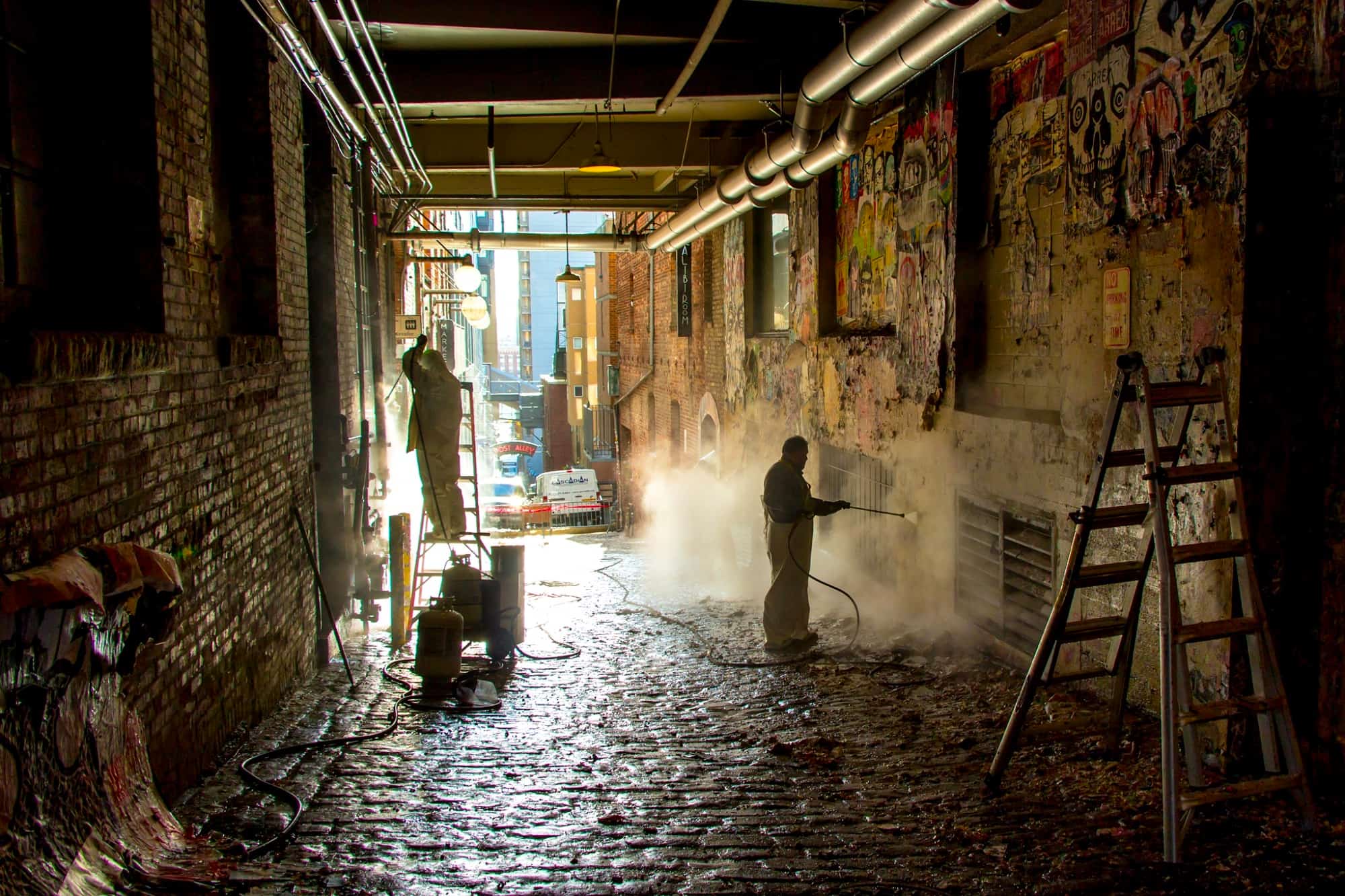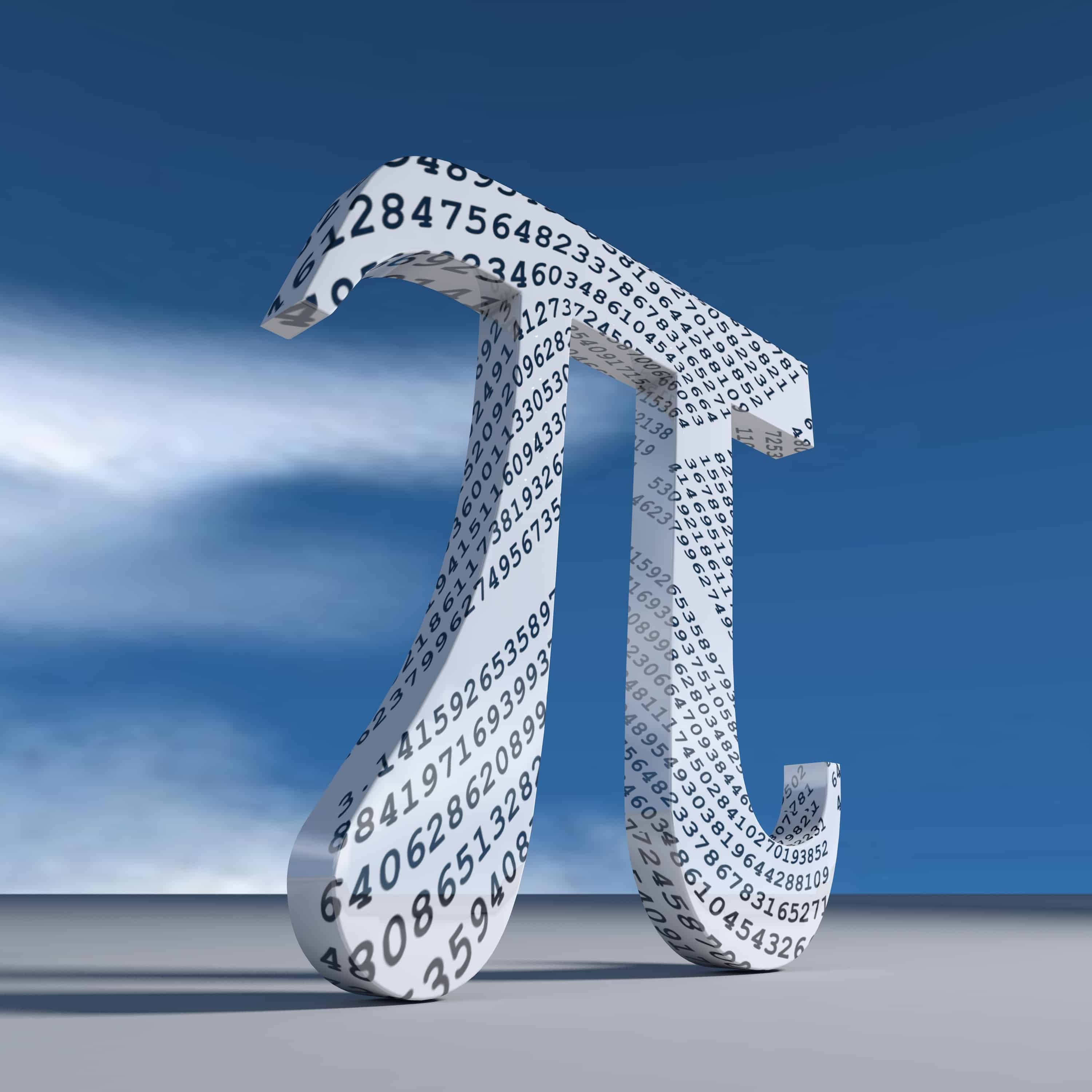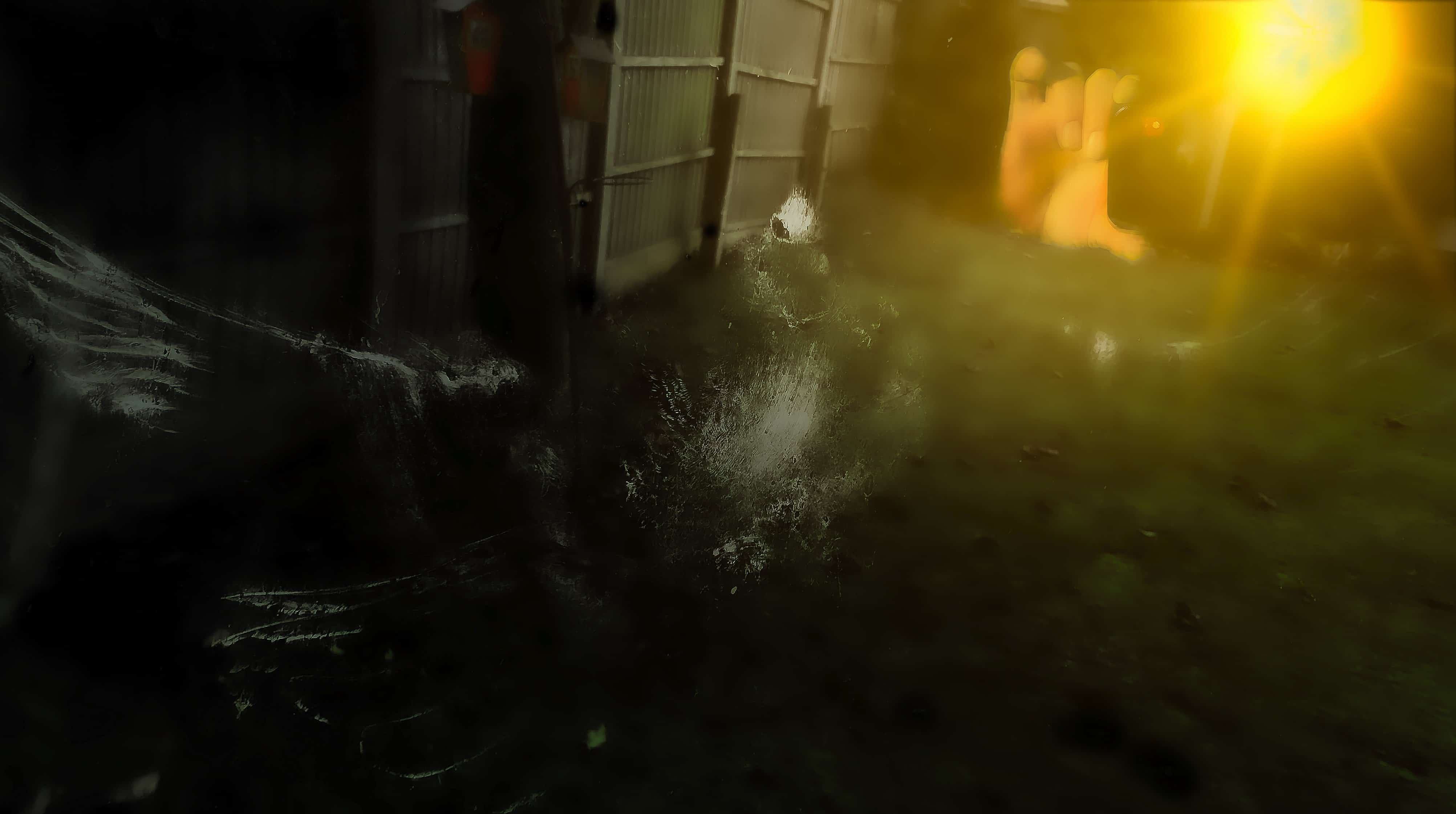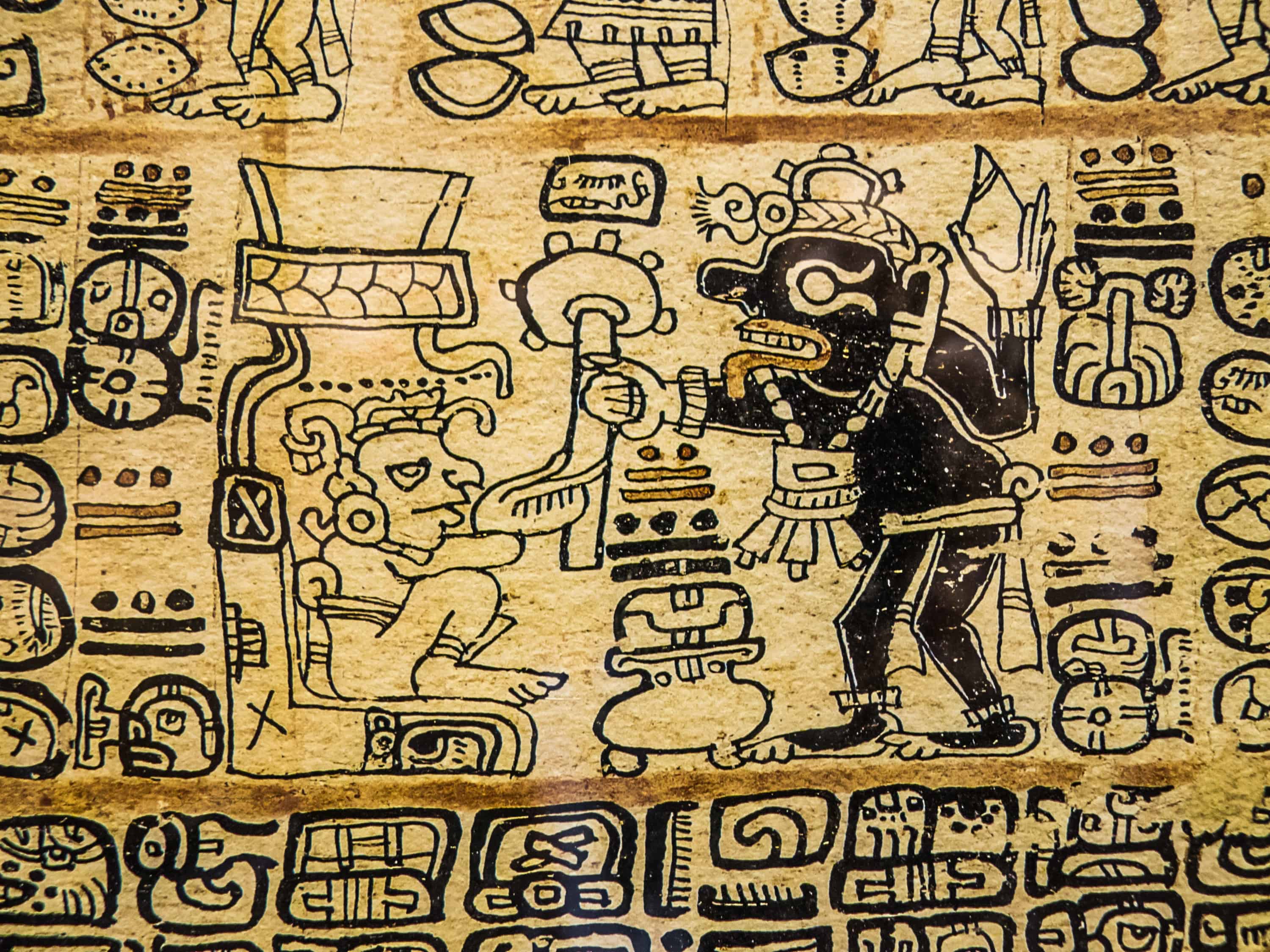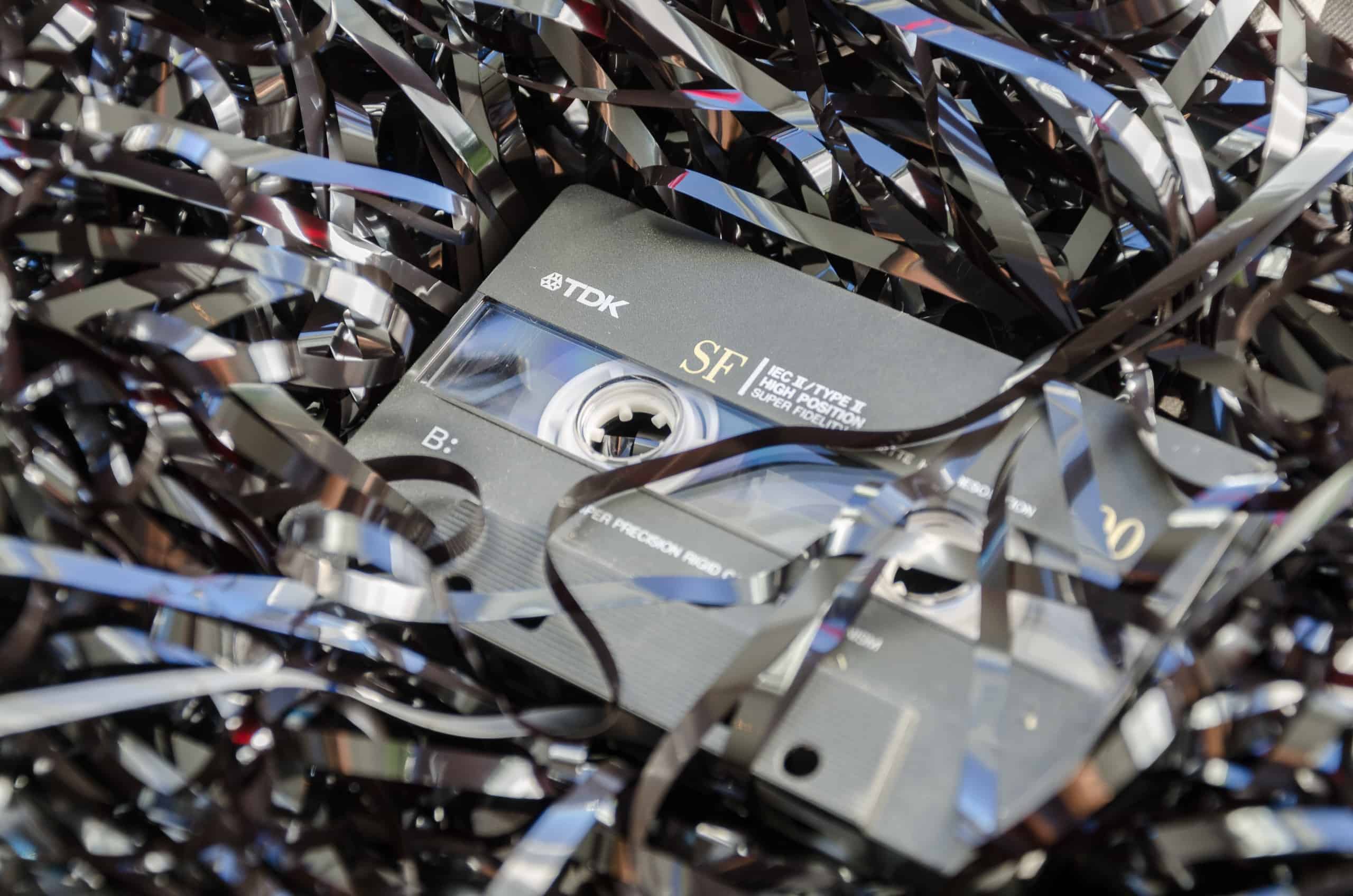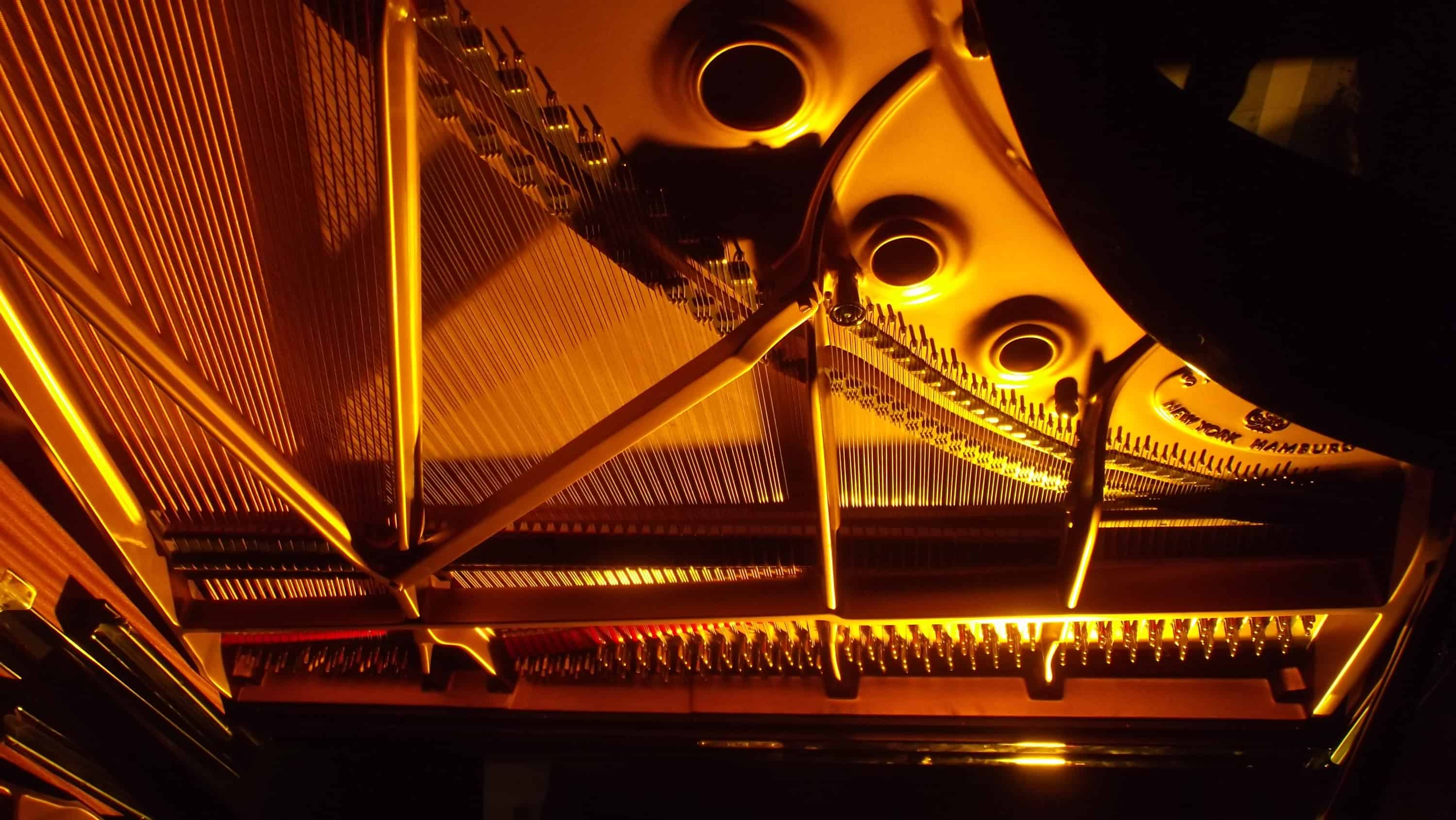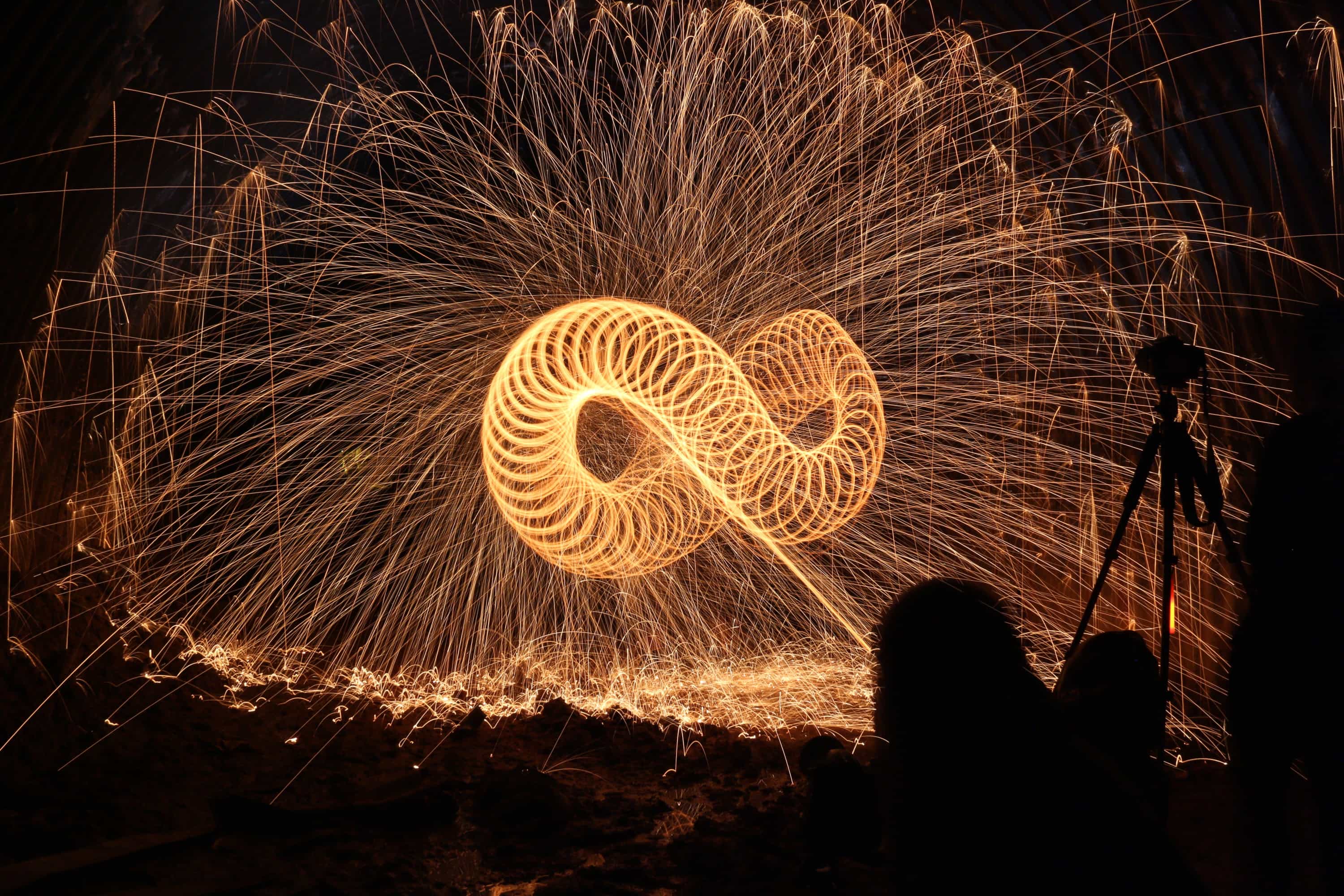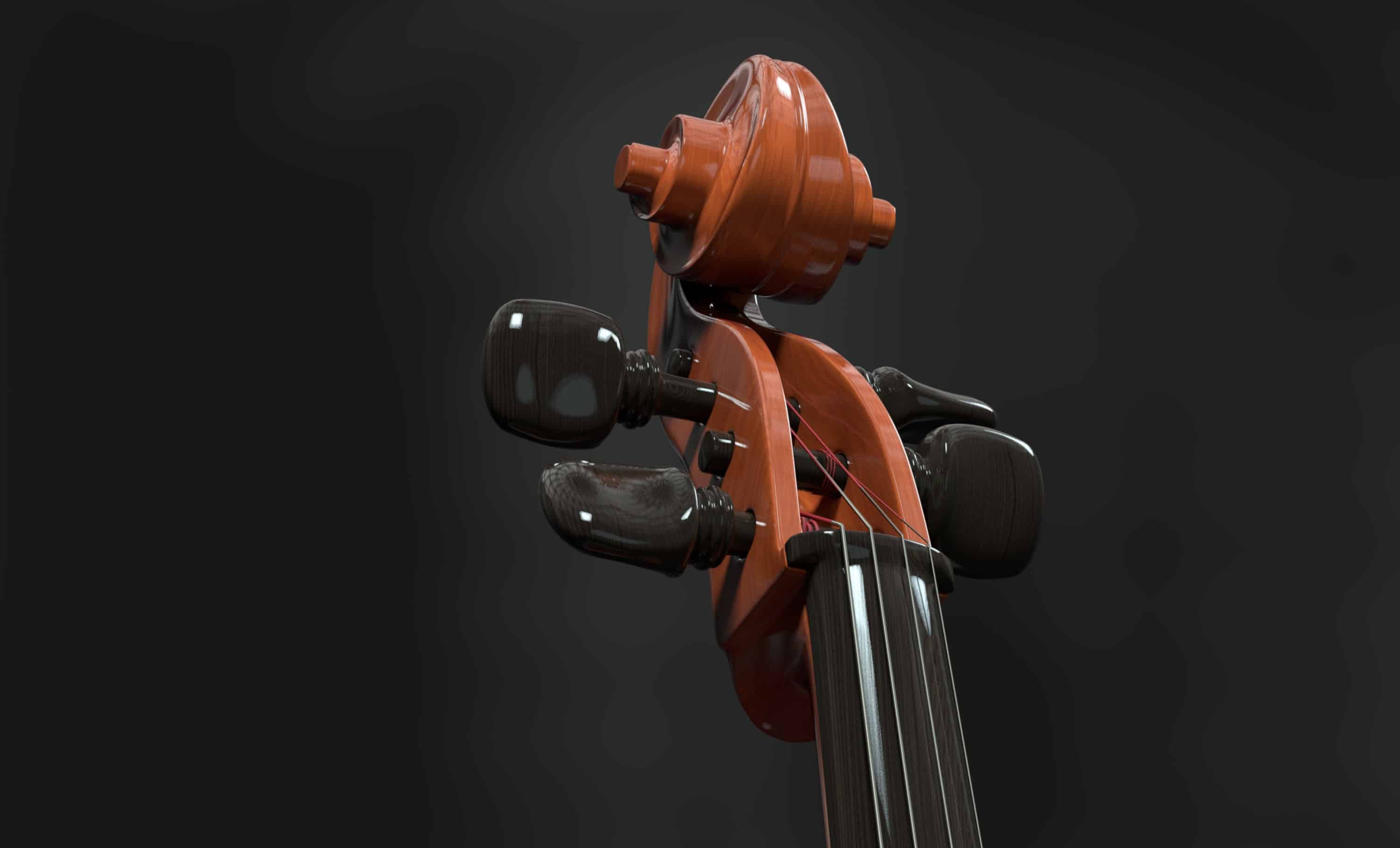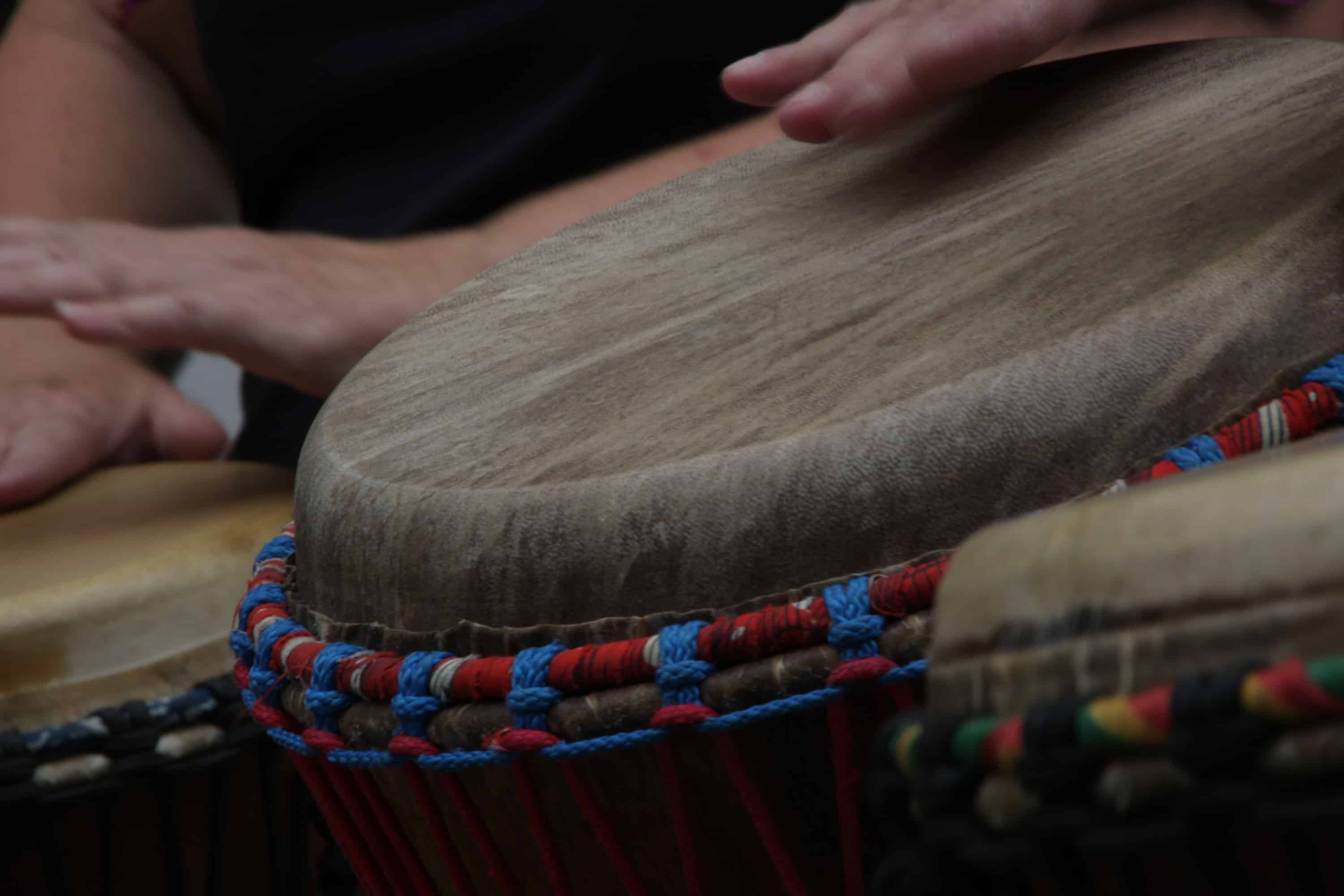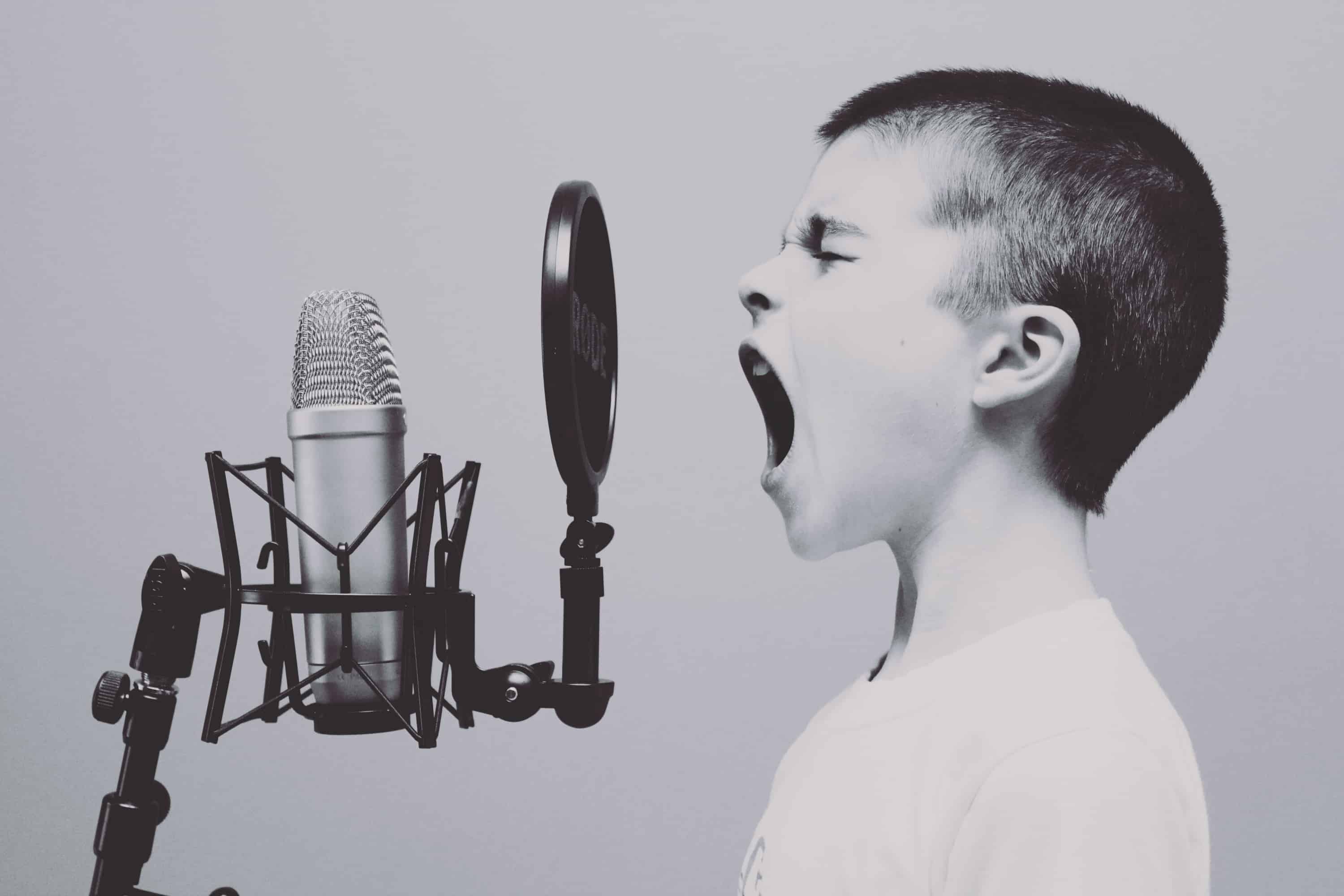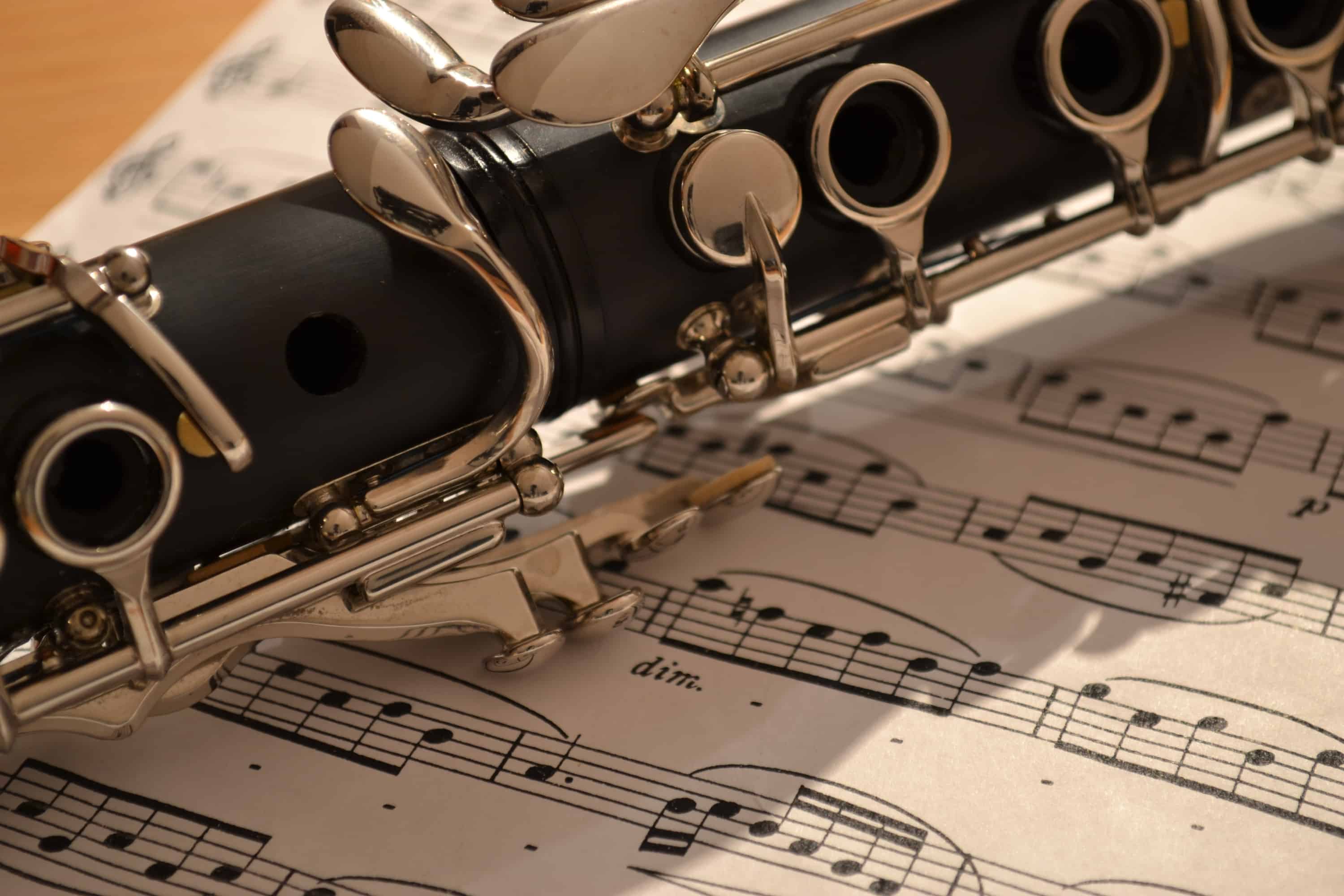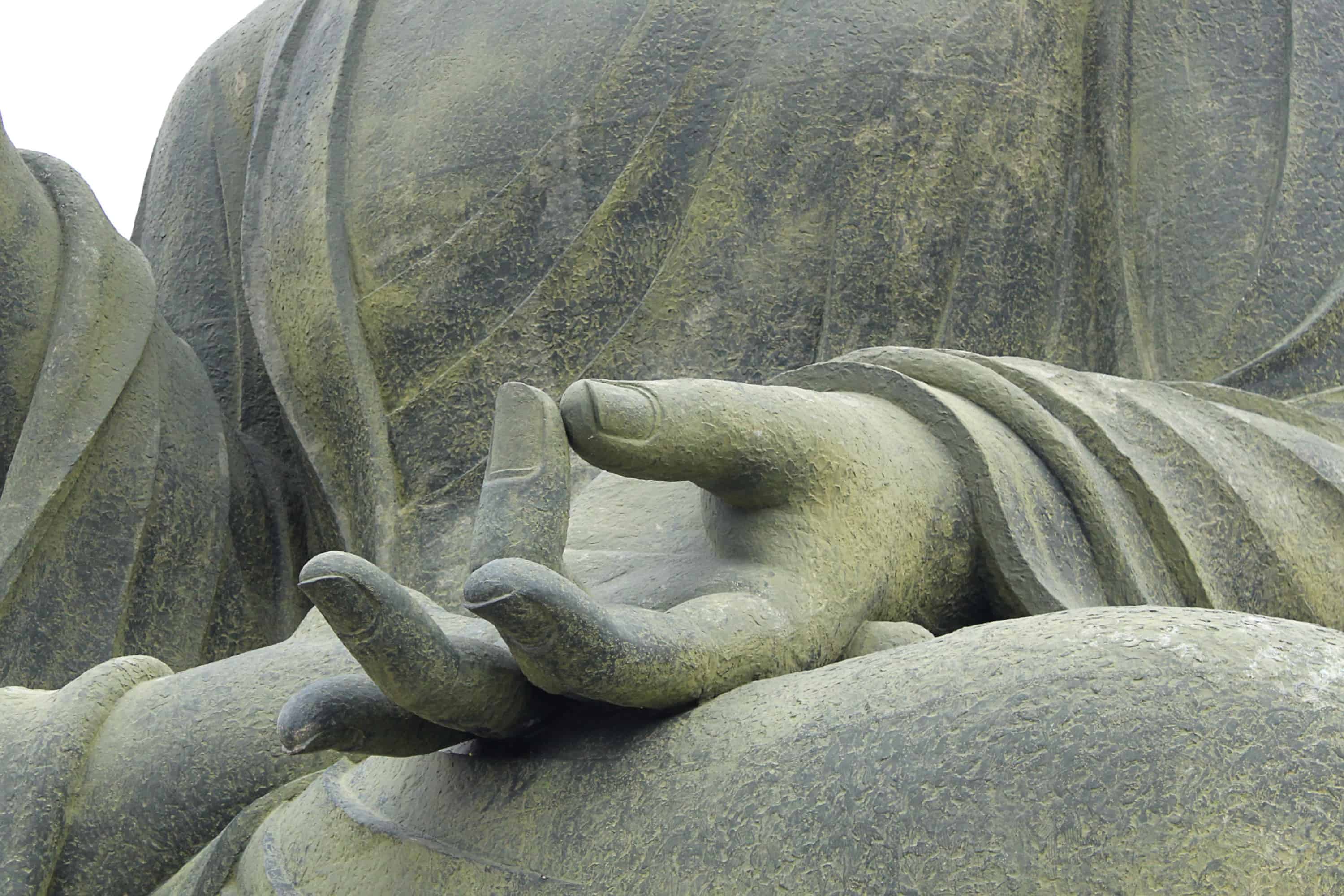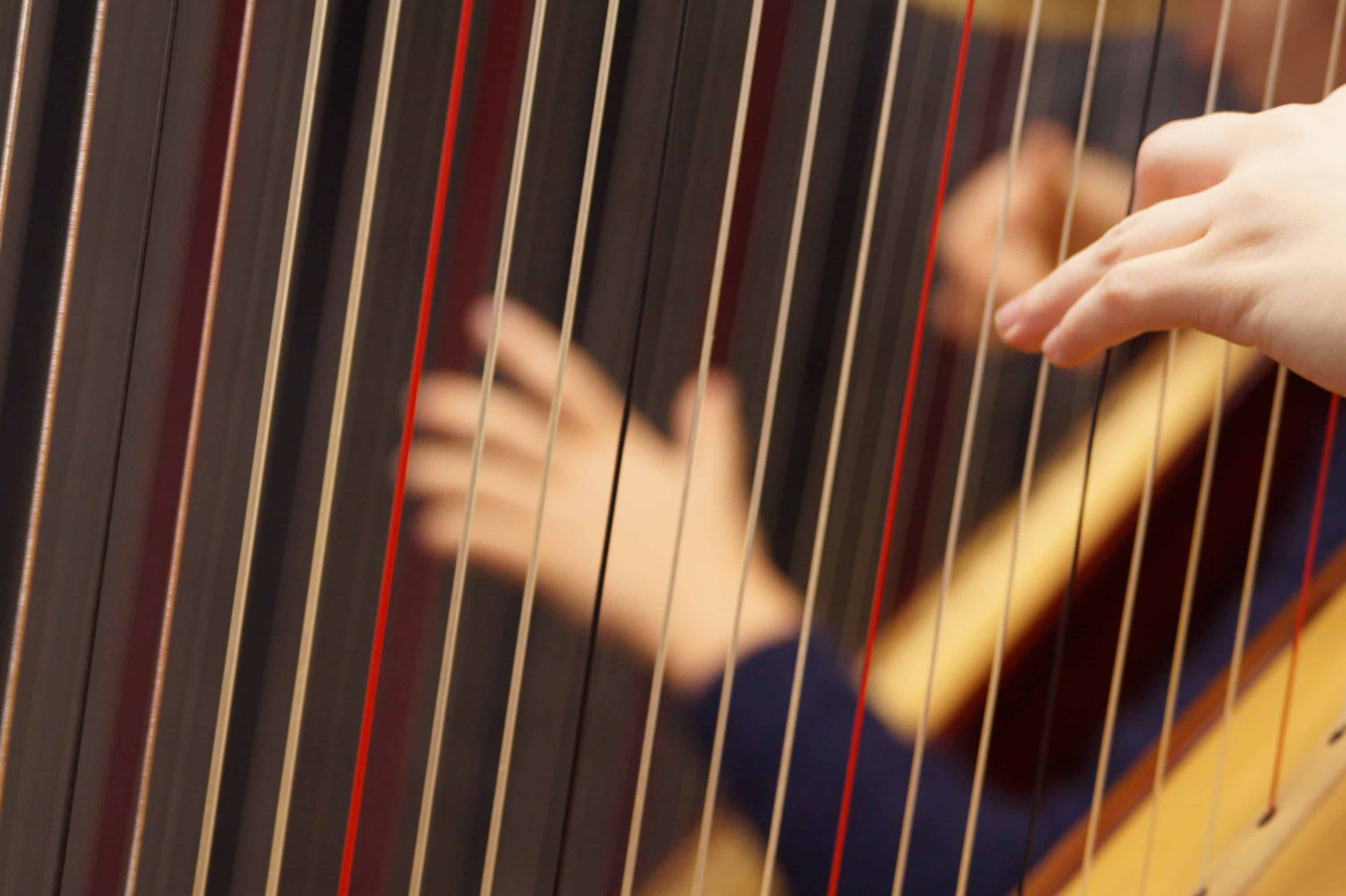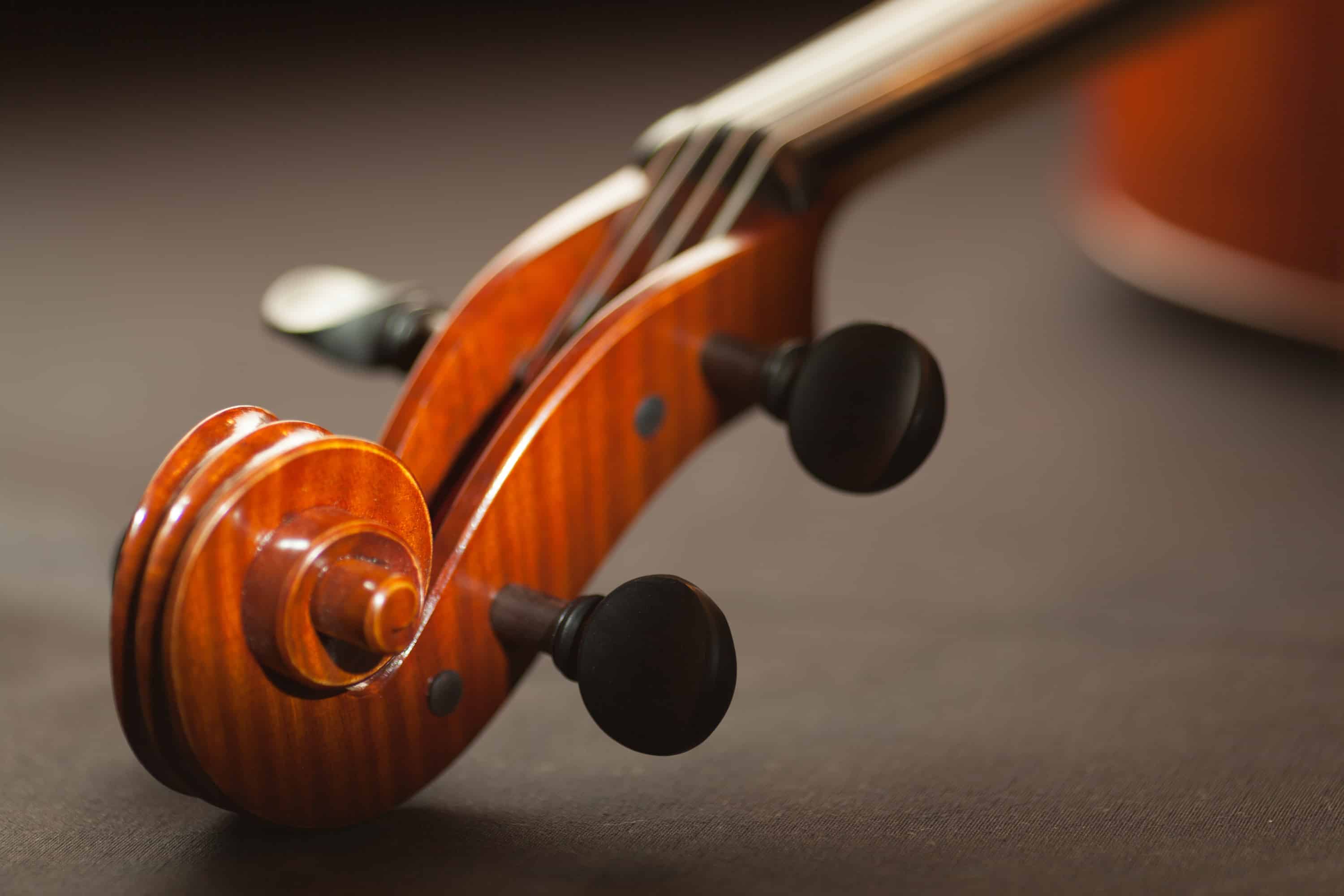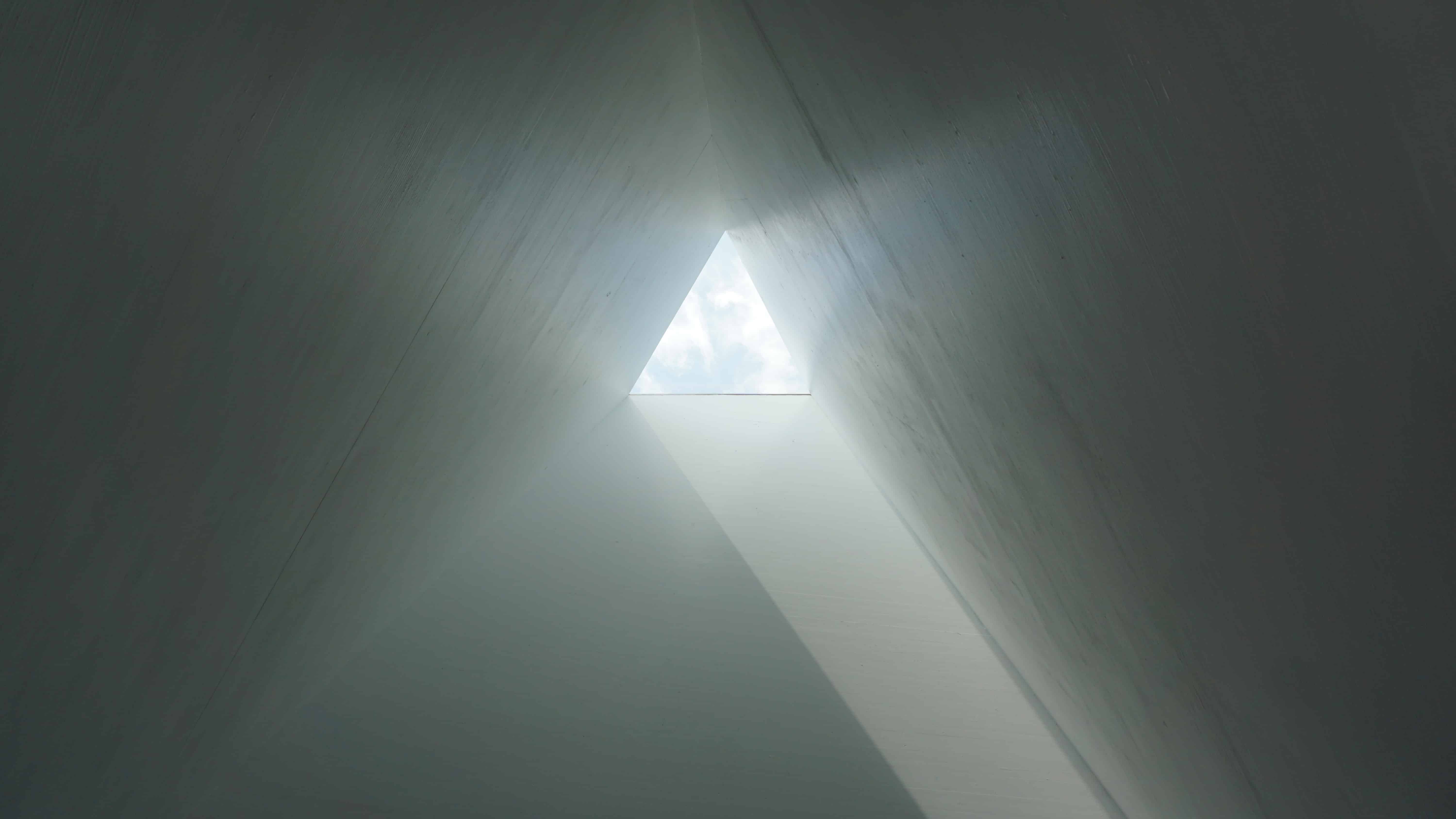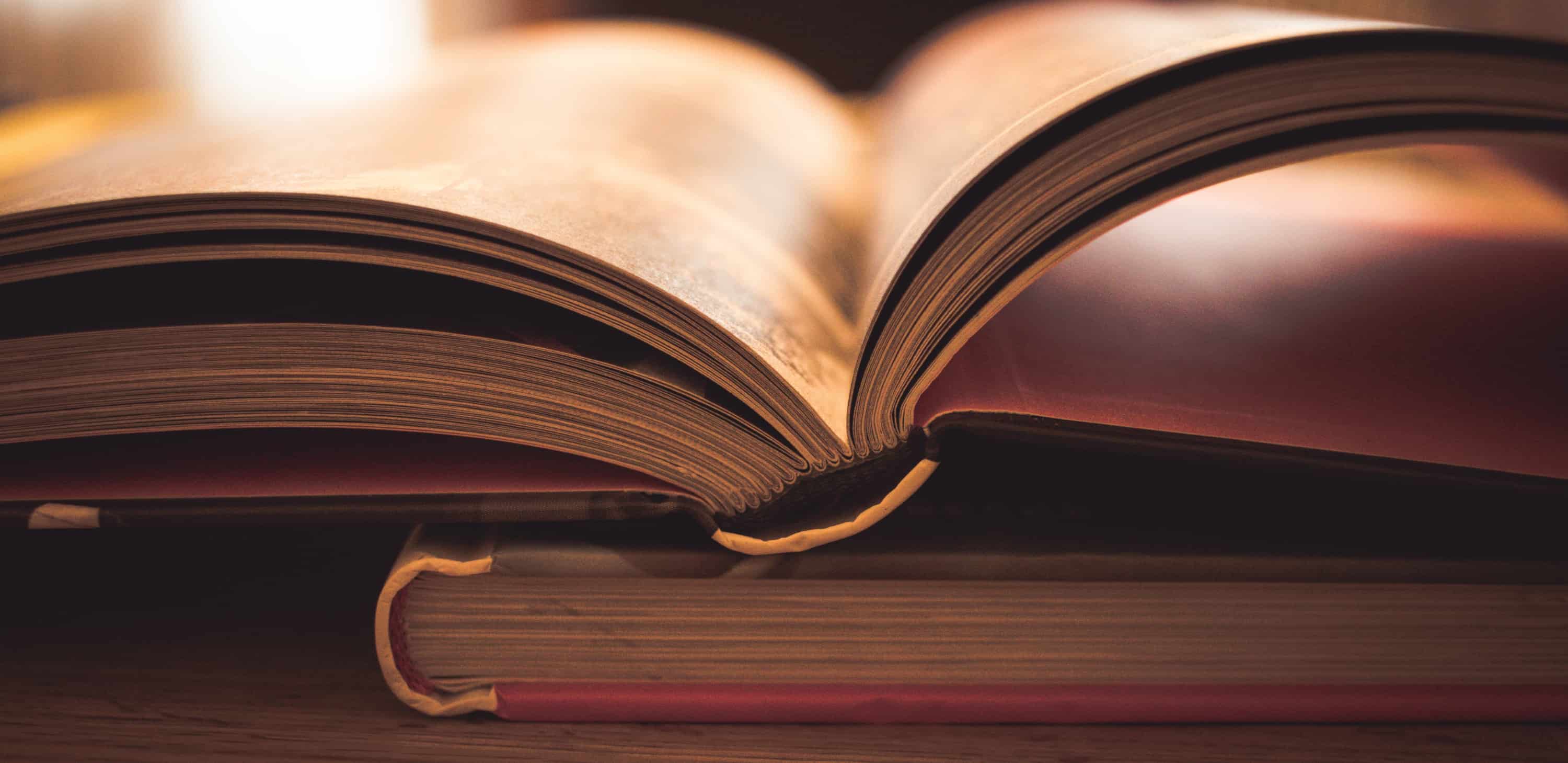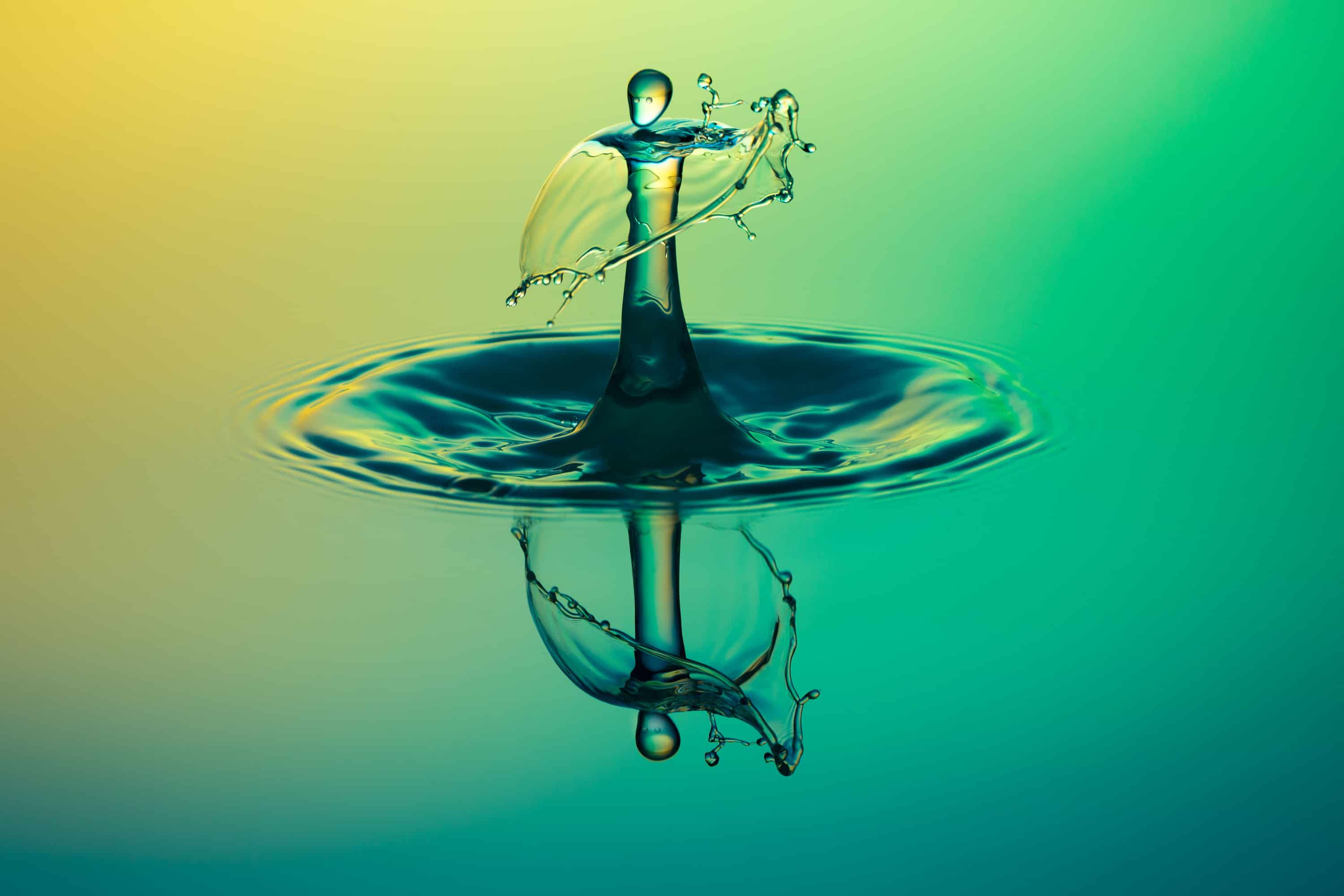Acoustic Composition 22
Palindrome Triptychs – Part Three
Turning Water into Wine (2002/20)
Three movements for tubular bells, marimba, harp and piano
Guide Recording
The Palindrome Triptychs is a series of three works in three movements. Each piece in the series is approximately nine minutes in length. The scores pay homage to the palindromic techniques of Messiaen in the macro-design of the series as a whole and through the distribution of form, rhythm and pitch organisation in each of the three triptychs: A triptych of triptychs.
Apart from the single note (unison), the interval (the space between two notes) is the smallest pitch palindrome. There are six interval-classes and when used in multiple, they all complete an equidistant palindromic cycle: Class 1 and 5 are notable in the fact they cycle through the total chromatic before they repeat any notes. Class 1 will result in an equidistant row of total dissonance (chromatic octave) and Class 5 results in an equidistant row of twelve-tone consonance (cycle of fourths/fifths). Class 2 produces a six-note equidistant whole-tone scale, Class 3 results in a four-note equidistant diminished 7th chord, Class 4 results in a three-note equidistant augmented triad and Class 6 simply produces the two-note interval of a tritone. Apart from the single note, the interval (or micro-interval) is the smallest pitch palindrome.

If all intervals create palindromes, then it seemed logical to work with the two All-Interval Tetrachords (AIT) 4-z15 (0146/0256) and 4-z29 (0137/0467) within Palindrome Triptychs – Part Two – Ultima Thule. Reminiscent of the Matryoshka Principle (traditional Russian nested dolls design), this research uncovered further palindromes within palindromes: The AIT are subsumed within the two All-Triad Hexachords (ATH) 6-z17 (012478) and 6-z17b (014678). The ATH in turn can be found in prime form within the Symmetrically Inverted All-Interval Twelve-Note (SI AITN) Chords: (Elliott Carter numbers) SI AITN 1, 3, 58 and 60. In addition (and perhaps incidentally), Dorian Mode (Heptachord 7-35) is the only mode in the tonal system that inverts to itself: a tonal, or ‘natural’ palindrome. The Dorian Mode subsumes a transposition of its own complement; the Major Pentatonic Scale (Pentachord 5-35): another scalic palindrome.
Most people imagine palindromes as symmetrical absolutes with perfect reflections (mirror opposites) that read from a central axis expanding outwards on the horizontal and/or vertical plane, but palindromes can expand into panoptic space or at least into euclidean space1 and palindromes do not always have to be symmetrical, they can be proportional in augmentation and diminution or even reflect from alternate angles as can be found in the artwork of Da Vinci. Palindromes are theoretically infinite (both infinitely large and infinitely small) and potentially perfectly proportionate within a panoptic space, so it is easy to see why they have always been considered culturally and spiritually significant.
The Palindrome Triptychs explore mirror reflections of rhythm and form (Matryoshka Form) from the micro to the macro via pitch organisation also conceived from the micro to the macro: palindromes within palindromes, combinatorial cells within combinatorial rows.
1 A space in any finite number of dimensions, in which points are designated by coordinates (one for each dimension), the distance between two points is given by distance formula.
Turning Water into Wine:
The first sketches for Turning Water into Wine (Palindrome Triptychs – Part Three) date back to 2002. The original score was submitted as part of an MA portfolio entitled A Tonal Anomaly. The work was revised, rearranged, rescored and part-recomposed in 2010 under the title of Reclamations.
In those days one didn’t know whether to sound like Pierre Boulez or Miles Davis, Luciano Berio or Ornette Coleman and would literally throw ideas at the manuscript paper wrapped within energetic elements of personalised polystylism. In this instance, the result was an ensemble texture of ‘klangfarben’ type material that quite simply evaporated through analysis of the linear parts. Each phrase was entirely dependent upon the synchronisation of the collective instruments and the constantly arpeggiated rhythms, motivic interactions and intricate entrances made the music difficult to notate.
2010 revisions were extensive, radically simplified the textures and reconceived the score in a mensural notation where all durations were doubled (often quadrupled) for easier reading. The ensemble was then instructed to rehearse the piece to the fastest tempo possible, and, in doing so, the durations reduced in proportion to the increasing tempi: semi, demi-semi and hemi-demi-semi quavers instead of minims, crotchets and quavers. This music has always held personal value, but the original notation and instrumentation (two harps, two marimba players at one instrument etc.) was a total mess: a complex monstrosity. The resultant score from 2010 revisions (though the exercise was a wonderful education) resembled a setting of plainchant and simply did not look like the music actually sounded. The score was withheld …
Chance Encounters & Palindromic Reflections:
Following a productive period salvaging incomplete and withdrawn material during 2019/20, one returned to the ‘task at hand’ and spent time within the score for an orchestral work in progress (Sacsayhuaman). The orchestra opens in an explosive tutti (near acoustic saturation) with the harmony composed from vertical palindromes. The tempo is fast, and the music is devouring material very quickly, but things seem to be progressing well, so one was once again (far too easily) distracted by ‘the folder of incomplete works’ and stumbled across the precompositional planning and mensural score for Reclamations. It was quite astonishing to see how close the design and concept was to that of Palindrome Triptychs – Part Two. Apart from the fact the music was composed in three movements, the twelve-tone row was a blatant palindrome and could be subdivided into a triptych of chromatic minor thirds, with each group separated by a perfect-fourth interval.
Instant Matryoshka Form: palindromes within palindromes, combinatorial cells within combinatorial rows. How serendipitous …!
C – Db – D – Eb – Ab – A – Bb – B – E – F – Gb – G
0 – 1 – 2 – 3 – 8 – 9 – 10 – 11 – 4 – 5 – 6 – 7
One recalls how ‘the younger version of oneself’ had been ‘so pleased with himself’ after establishing the symmetry within this row. Now one would immediately recognise that the strict inner self-replication negates any real sense of variety for subdivision into smaller PC sets (beyond that of the individual pitches themselves), therefore enforcing a predetermined sense of stasis within the very foundations of the work. One would now look to precompose elements of pitch scheme, phrase and ‘anomaly’ into the contour of the row: “You will learn.” One thought about one’s past self …!
2020 Revisions:
2020 revisions reconceived the notation throughout and reimagined the form of the first movement in reaction to its new home within this collection. The original block phrases were dislocated and redistributed like a broken vase put back together with pieces in the wrong place; shards of glass mirroring unusual palindromic reflections that, regardless of irregularities, retains its aesthetic beauty, and (as Picasso’s faces have proven), is still instantly recognisable as a vase. The second movement is far more fluid in form and (with consistent waves of crescendo and release) serves as the energetic central landmark of the piece in a cathartic exorcism of aggression and frustration. The third movement can be described as a symbiotic mood, an ‘amorphic whole’, where the collective sound of the ensemble seems far greater than the sum of its parts and the pulse grinds to a halt.
There was so much material in the original two scores that revisions generally concentrated upon reducing complexities whilst trying to salvage as much music as possible and translate that music into legible notation. The various ‘klangfarben’ motives were conflated into more cohesive linear lines. Passages of melodic phrasing and rhythmic ostinato were added as connecting links in the introductory block-chain form. The inclusion of echoing and displaced canonic retrogrades and inversions helped to unite the musical material further and provided reminiscent interactions between past and present as the form progressed. A few bars were added (others removed) as the new score subtly morphed into its place at the tail of these triptychs and an internal narrative (inspired by social events of 2020) evolved to cast its influence over the intricacies of emotion, instrumentation and pacing in the final form (especially in the third movement). Silence and decay have become important elements in this new arrangement.
Palindrome Triptychs – Part Three was already a work in progress, but as revisions on this score evolved, it was obvious this should be the finale. The inherent character of the music and the internal narrative practically insisted upon it. Part Three would therefore contain the oldest material and Part One (when finished) will contain the newest. This palindromic nonlinearity seemed ‘most fitting’.
In Summation:
Change is Gon’ Come …
Turning Water into Wine explores the symbiotic timbres of this ensemble in a virtuosic sonic journey where pulse is more important than meter (and somehow always seems slower than the actual tempi). Heterodyning natural decay and pedalled piano tones produce microtonal resonances in complex, but idiomatic sound timbres and gloriously ‘out of tune’ harmony that one simply could not recreate through ‘more mature’ ears. Quasi-jazz elements and sections of unbridled polystylism add the stamp of an earlier personal autograph. The thematic ostinatos (often heard in transitory passages) and generally static nature of the pseudo-serial pitch organisation are also indicative of this composer’s earlier work. However, there is also the unmistakable influence of an ‘older self’ running through the bars of this score and it is he one has to thank for finally being able to present this music through the pages of a legible score.
Turning Water into Wine is part three in this triptych of triptychs. The theoretical duration is:






